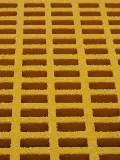loading...
- No. 9, Xingyuan South Street, Dongwaihuan Road, Zaoqiang County, Hengshui, Hebei, China
- admin@zjcomposites.com
- +86 15097380338
- Welcome to visit our website!
reinforced concrete with frp bars mechanics and design
Mechanics and Design of Reinforced Concrete with FRP Bars
Reinforced concrete (RC) has long been recognized as a crucial material in the construction industry, providing impressive strength and durability. However, traditional steel reinforcement bars (rebars) can present challenges, such as susceptibility to corrosion and issues related to weight. As the demand for more resilient and sustainable construction materials grows, Fiber-Reinforced Polymer (FRP) bars have emerged as a viable alternative. This article explores the mechanics and design considerations of using FRP bars in reinforced concrete structures.
Understanding FRP Bars
FRP bars are composed of a polymer matrix reinforced with fibers, typically glass, carbon, or aramid. Unlike steel, these materials offer high strength-to-weight ratios and excellent resistance to chemical attacks, making them especially suitable for harsh environments. Additionally, FRP bars are non-corrosive, which significantly extends the lifespan of concrete structures that might otherwise suffer from rebar corrosion, particularly in environments exposed to moisture or saline conditions.
Mechanical Properties of FRP Bars
The mechanical properties of FRP bars differ significantly from those of traditional steel rebars. FRP bars have a lower modulus of elasticity compared to steel, which means they are more flexible and can deform under load. However, this characteristic also contributes to some of the challenges faced in design and structural performance. Designers must carefully account for the reduced tensile strength and the potential for creep under sustained loads when using FRP in concrete applications.
One of the key advantages of FRP bars is their high tensile strength. This property enables engineers to utilize smaller and lighter bars, reducing the overall dead load of the structure. Furthermore, the low thermal conductivity of FRP makes it an ideal choice for structures exposed to temperature fluctuations, as it minimizes thermal bridging.
Design Considerations
Incorporating FRP bars into reinforced concrete design requires a shift in traditional engineering practices. Since FRP behaves differently under load, the design codes and guidelines must evolve to provide adequate recommendations for their use. The American Concrete Institute (ACI) and other organizations have begun to publish standards relating to FRP reinforcement.
reinforced concrete with frp bars mechanics and design

When designing with FRP bars, engineers need to consider several factors
1. Flexural Strength The flexural capacity of concrete beams reinforced with FRP can be reduced due to the lower modulus of elasticity. Engineers must calculate the required amount of reinforcement to ensure that the beams can resist the applied loads without excessive deflection.
2. Bond between FRP and Concrete The bond between FRP bars and concrete can differ from that of traditional steel. Engineers must ensure adequate bonding to provide the necessary shear transfer and prevent debonding under load, especially in tension zones.
3. Serviceability Limit States Due to the unique properties of FRP bars, deflections and crack widths must be carefully managed. The design must ensure that serviceability criteria are met to provide comfort and safety for building occupants.
4. Long-Term Performance While FRP bars resist corrosion, their long-term behavior under various environmental conditions must be considered. Engineers should evaluate the effects of temperature, moisture, and UV exposure on FRP materials throughout the life cycle of the structure.
5. Fire Resistance The fire resistance of FRP bars is less than that of steel. Therefore, fire protection measures may be needed to secure the structural integrity of concrete elements during a fire event.
Conclusion
The integration of FRP bars into reinforced concrete design offers numerous advantages, including weight reduction, enhanced corrosion resistance, and potential cost savings due to lower maintenance requirements. However, the unique mechanical properties and behavior of FRP require that engineers adapt their design approaches and utilize appropriate guidelines to ensure structural integrity and performance. As research progresses and design codes evolve, the use of FRP in reinforced concrete construction is expected to expand, paving the way for more durable and sustainable structures in the future. By embracing these advanced materials, the construction industry can address modern challenges while improving the longevity and reliability of its structures.
-
The Expansive Industrial Reign of FRP Pressure VesselsNewsAug.22,2025
-
Manufacturing Premium FRP Square Pipes for Global Wholesale ExcellenceNewsAug.22,2025
-
Strategic Applications for FRP Grating SolutionsNewsAug.22,2025
-
Material Science Forging GRP Water Tank LongevityNewsAug.22,2025
-
The Engineered Excellence: Material Science Behind FRP Railing SystemsNewsAug.22,2025
-
How Digital Pultrusion Revolutionizes FRP Profile WholesalingNewsAug.22,2025
-
The Rise of FRP Profiles: Strong, Lightweight, and Built to LastNewsJul.14,2025
